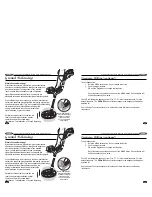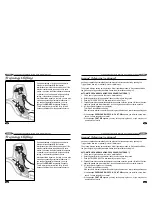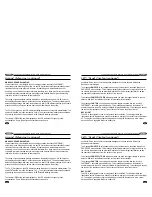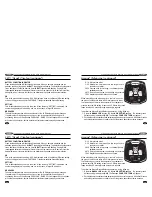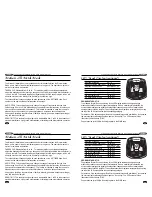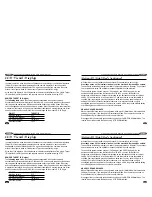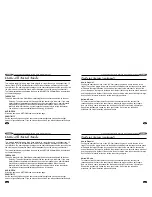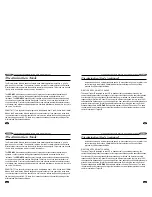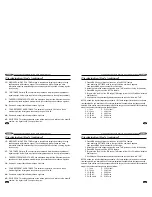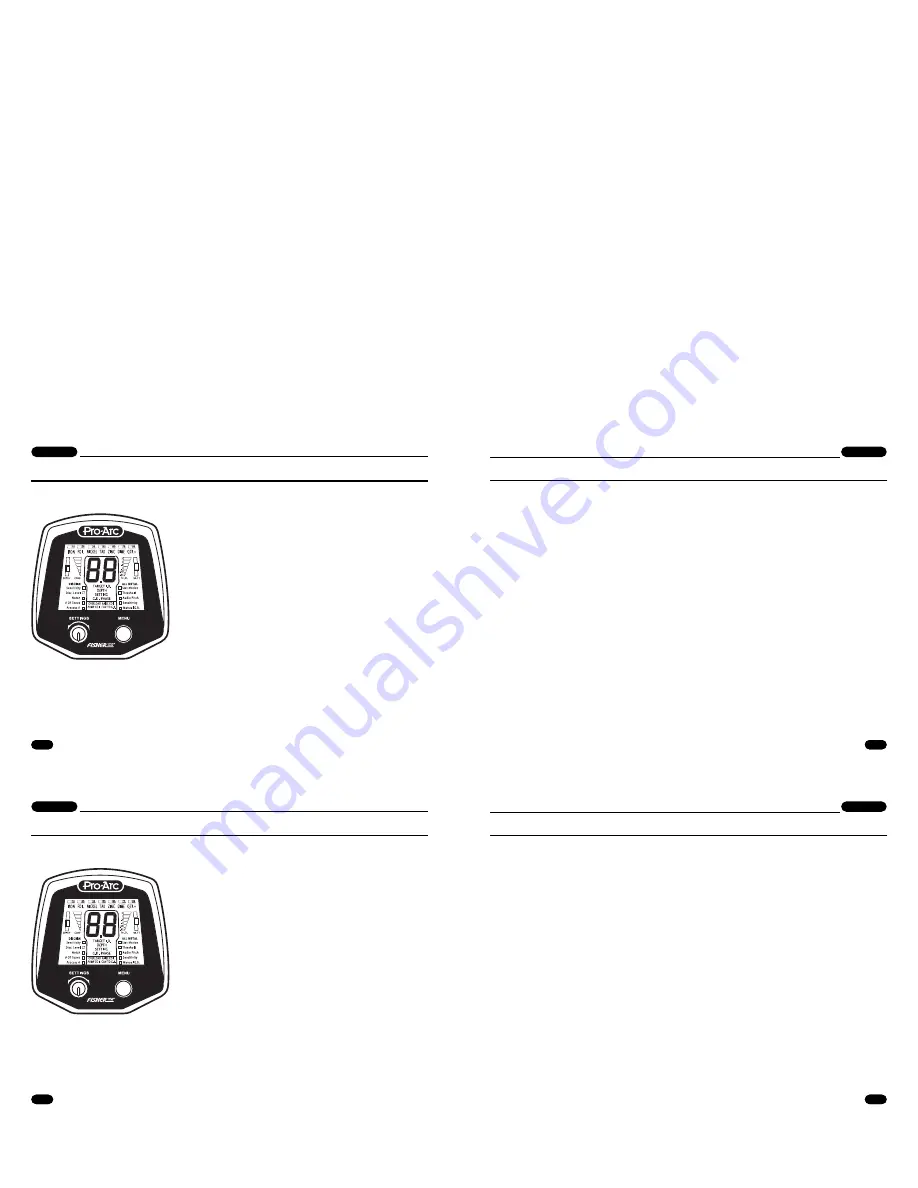
33
Comprehensive Operating Manual & Guide to Metal Detecting
PRO-ARC
22
PRO-ARC
Comprehensive Operating Manual & Guide to Metal Detecting
41
Discrimination Mode (continued)
Here are some examples of NOTCH used in conjunction with DISC LEVEL
If Discrimination Level is set at 60, and you set the top-of-foil (21-25) notch between 21
and 25, then: top-of-foil range (21-25) is NOTCHED-IN (i.e. detected)
If Discrimination Level is set at 23, and you set the top-of-foil (21-25) notch between 21
and 25, then: 21, 22 & 23 are NOTCHED-IN. 24 & 25 are NOTCHED-OUT
If Discrimination Level is set at 15, and you set the top-of-foil (21-25) notch between 21
and 25, then: 21-25 are NOTCHED-OUT
NUMBER OF TONES (# OF TONES)
This menu selection allows you to select the number of audio tones emitted by the detector.
Different search conditions, search objectives, or personal preference will determine how
many tones you want to hear. With the below settings, you can decide to hear the same tone,
regardless of the target category, or have different categories of targets induce different tones.
The “# OF TONES” selections are:
1:
SINGLE MEDIUM PITCH TONE
All types of metal induce the same tone.
40
Discrimination Mode (continued)
The following are characteristics of NOTCH programming:
• As you rotate the knob to enter a notch range, the
target indicator block at the top edge of the screen
illuminates to show you the range you are in.
• After you have selected a notch, a slash is illuminated
over that range, indicating that all targets within that
range are eliminated from detection.
• When you enter the program to make a change to the
notch settings, you are changing the status of the
notch. If no slash is illuminated and you press MENU
to set a notch range, you will be notching-out this
range. If a slash was previously illuminated and you
press MENU to set this notch range, you will be
notching-in this range.
•
Programming a notch range always reverses the status of the notch.
Using DISC LEVEL in conjunction with NOTCH gives you a great deal of flexibility in deciding
which values to include or exclude from detection. Beware that this combination can be
confusing.
33
Comprehensive Operating Manual & Guide to Metal Detecting
PRO-ARC
22
PRO-ARC
Comprehensive Operating Manual & Guide to Metal Detecting
41
Discrimination Mode (continued)
Here are some examples of NOTCH used in conjunction with DISC LEVEL
If Discrimination Level is set at 60, and you set the top-of-foil (21-25) notch between 21
and 25, then: top-of-foil range (21-25) is NOTCHED-IN (i.e. detected)
If Discrimination Level is set at 23, and you set the top-of-foil (21-25) notch between 21
and 25, then: 21, 22 & 23 are NOTCHED-IN. 24 & 25 are NOTCHED-OUT
If Discrimination Level is set at 15, and you set the top-of-foil (21-25) notch between 21
and 25, then: 21-25 are NOTCHED-OUT
NUMBER OF TONES (# OF TONES)
This menu selection allows you to select the number of audio tones emitted by the detector.
Different search conditions, search objectives, or personal preference will determine how
many tones you want to hear. With the below settings, you can decide to hear the same tone,
regardless of the target category, or have different categories of targets induce different tones.
The “# OF TONES” selections are:
1:
SINGLE MEDIUM PITCH TONE
All types of metal induce the same tone.
40
Discrimination Mode (continued)
The following are characteristics of NOTCH programming:
• As you rotate the knob to enter a notch range, the
target indicator block at the top edge of the screen
illuminates to show you the range you are in.
• After you have selected a notch, a slash is illuminated
over that range, indicating that all targets within that
range are eliminated from detection.
• When you enter the program to make a change to the
notch settings, you are changing the status of the
notch. If no slash is illuminated and you press MENU
to set a notch range, you will be notching-out this
range. If a slash was previously illuminated and you
press MENU to set this notch range, you will be
notching-in this range.
•
Programming a notch range always reverses the status of the notch.
Using DISC LEVEL in conjunction with NOTCH gives you a great deal of flexibility in deciding
which values to include or exclude from detection. Beware that this combination can be
confusing.

